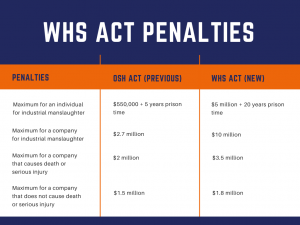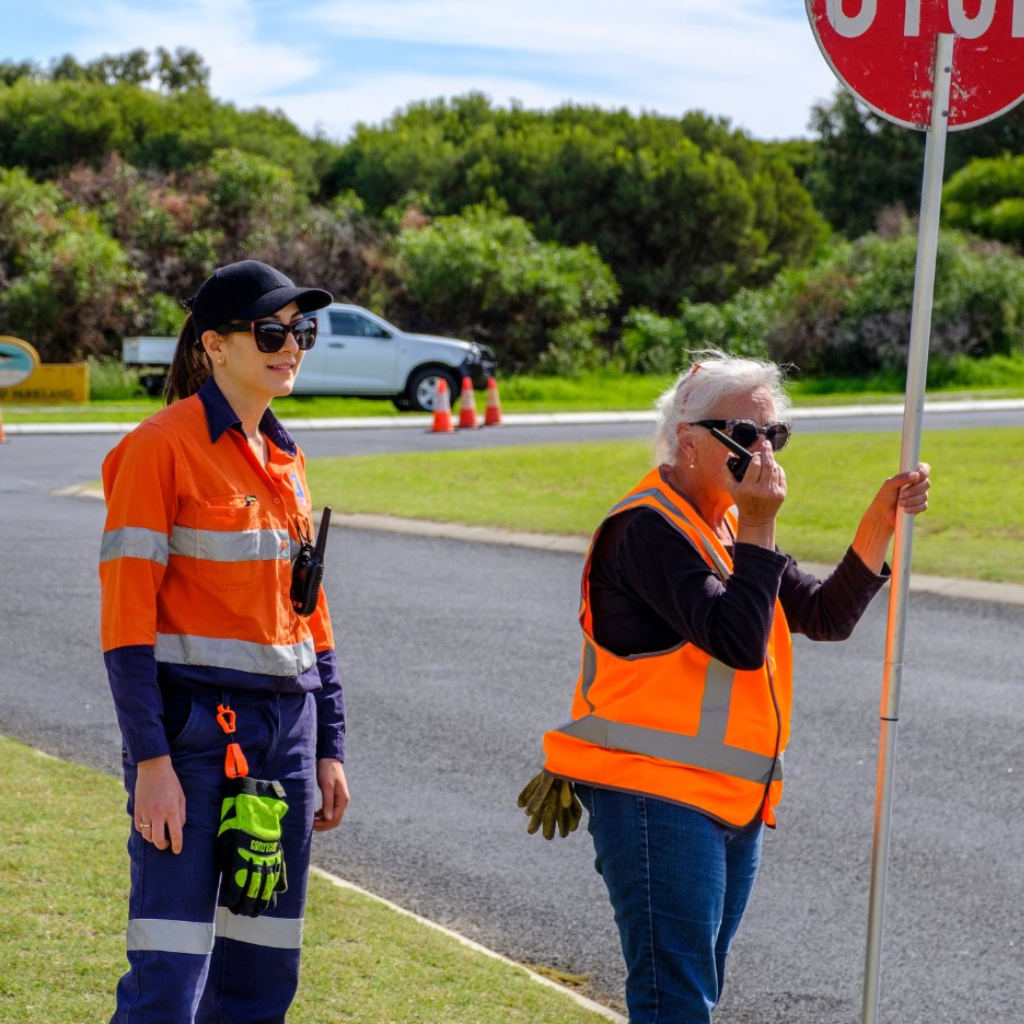If you’re a business owner, whether you are operating in Traffic Management or Civil Construction, working for a Local Government, a Supervisor, a Traffic Controller, or an employee – it doesn’t matter, everyone is impacted by these changes. It’s important to understand your obligations to provide a safe and healthy workplace. This includes keeping up with changes to work health and safety legislation.
The Department of Mines, Industry Regulation and Safety has introduced new Work Health and Safety (WHS) laws for Western Australia.
Here are seven things to know about the new WHS laws and how they could impact you or your business.
1. WHS is the new OSH
The previous laws around occupational safety and health, or ‘OSH’ as many of us know it, have been around for decades. The ‘OSH Act’ was first introduced in 1984 and has been supported by other legislation around specific health and safety measures related to mines and petroleum.
The Work Health and Safety Act 2020 (‘WHS Act’) will replace all of these and bring WA workplaces under a single WHS Act from 31 March 2022.
2. The PCBU has the primary duty of care
The WHS Act introduces a definition of the ‘person conducting a business or undertaking’ – or PCBU.
A PCBU can be:
- a sole trader (for example, a self-employed person)
- each partner within a partnership
- a company
- an unincorporated association
- a government department of public authority (including a municipal council)
If you’re a business owner, you could be a PCBU as an individual. If you run your business as part of a business partnership, you could each be individually and collectively a PCBU. Larger corporations and organisations will have what’s known as officers of the PCBU.
Previously, under the OSH Act, duty of care was largely based around the employer-employee relationship.
Now, under the WHS Act, all PCBUs have a primary duty of care to ensure the health and safety of their workers and others who may be affected by the carrying out of work.
This means, where reasonably practicable if you are the PCBU you would need to take action to eliminate risks to health and safety. If this is not reasonably practicable, you need to make sure those risks are minimised as far as is reasonably practicable.
3. Penalties have changed
Yes, that’s right, all penalties are increasing.
But the most significant in the entire legislation is the gross negligence/industrial manslaughter penalty. The current maximum penalty for a company is $2.7 million. Under the WHS Act this jumps to $10 million.
Just in case the penalties weren’t terrifying enough, if you’re charged as an individual the funds have to come out of your own pocket, not your company’s.
4. WHS laws will be similar across Australia
The new laws are largely based on the national model WHS Act and regulations used in other states and territories, except Victoria. This means businesses will have similar health and safety obligations and requirements across Australia.
5. Your Insurance
Previously if you were prosecuted under the prior OHS Act, your insurance can pay for your legal fees and your penalties.
Now the new WHS Act has come into effect, your insurance can still pay for your legal fees, but when it comes to paying the penalty, company officers and PCBUs cannot take out insurance to cover fines for breaches.
6. Things won’t change overnight – Transitional Arrangements
Many businesses will need a bit of time to adapt to the changes. To help support business owners during the change, the WHS Act has transitional arrangements which apply where duties are new or have changed a lot from what they were.
The WA Government has also allocated funding for an extra 21 inspectors and six support staff to help improve WHS outcomes.
Part 16 of the Work Health and Safety Act 2020 provides transitional periods for matters ranging from the terms of health and safety representatives (HSRs), to manufacturing and imports.
The approach taken will be consistent with the transition principles agreed to by Safe Work Australia. Click here to read more on Transitional arrangements in WHS Regulations.
7. Get prepared now
Through any change, it is important for all companies and individuals to be prepared and work through the transition period and be ready for the changes.
Our top tips for how to prepare!
- Download the new latest WHS legislation documents
- Communicate the WHS Act changes to key stakeholders and within your workplace
- Education and awareness – ensure that your key business stakeholders are aware of the changes and implications for your business and them as individuals. This includes your leadership team and those at the front line of the workplace.
- Conduct an audit of your business against the new legislation. An example of things to check is your Traffic Management Plans (TMPs) and ensure they are updated
- Create an action plan, and get to work!
Sources:
- https://www.mediastatements.wa.gov.au/Pages/McGowan/2020/10/Work-Health-and-Safety-Bill-passes-Upper-House.aspx
- https://www.commerce.wa.gov.au/announcements/november-2020-work-health-and-safety-bill-passes-parliament
- https://www.commerce.wa.gov.au/worksafe/november-2020-work-health-and-safety-act-2020-receives-assent
- https://www.dmirs.wa.gov.au/safety-regulation/work-health-and-safety-laws/introduction-whs-laws/introduction-whs-laws/whs
- https://www.dmirs.wa.gov.au/safety-regulation/work-health-and-safety-laws-0
Related Articles
With many changes affecting the Traffic Management Industry, it is now more important than ever to keep up to date with the changes:
Be sure to read more of our latest articles, covering a range of topics including:



